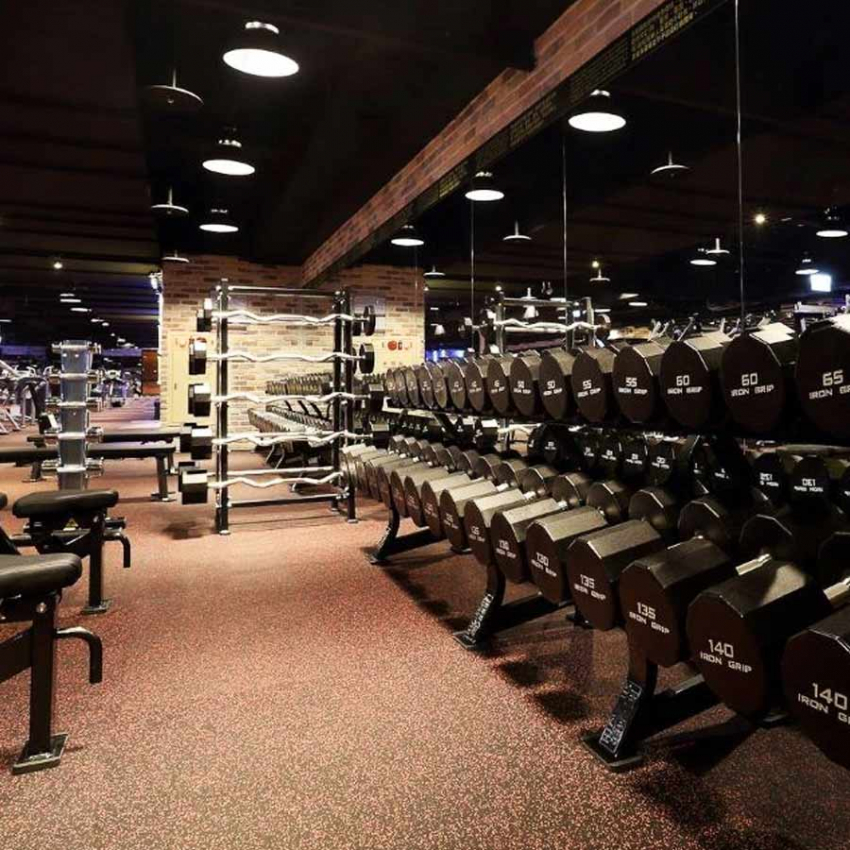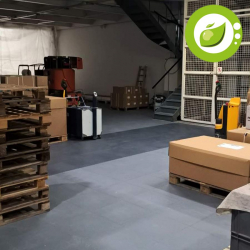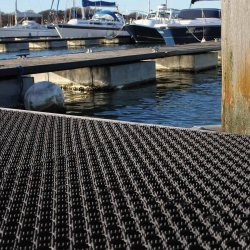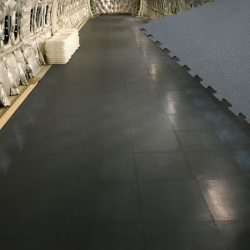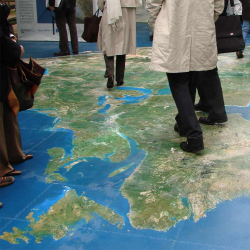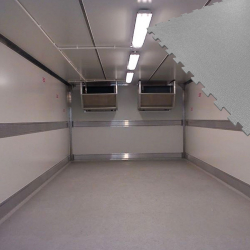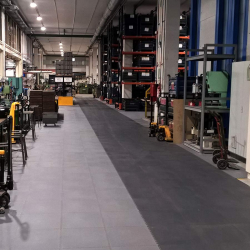Sports environment tiles
Indoor traffic - Intensive traffic
FITLINE tiles are ideal for absorbing the impact of heavy objects and reducing noise pollution by up to 17dB. They are made of rubber and are ideal for sports stores, sports halls, exhibition stands, etc.
Floor tiles specially designed for sports environments where the floor is subjected to heavy foot traffic and free-falling we ights on a daily basis.
No need to interrupt activity in the area concerned while the tiles are being laid
- Dimensions: 50 x 50 cm
- Color: Black speckled blue, black speckled white, black speckled red
- Finish: non-slip and ergonomic for user comfort
- High resistance to free-weight impact, wear and abrasion
- Good recovery after impact
- Sound reduction of up to 17 dB
- No gluing required, quick and easy installation
- For indoor use only
RECOMMENDED APPLICATIONS:
Suitable for use in sports stores, gyms, gymnasiums, exhibition stands, weight rooms, fitness centers, cross fit.

| Fitline |
Data sheet
| Location | Interior |
| Intensity of passage | Intense |
| Properties | Dampers |
| Composition | Rubber |
| Thickness | 6 mm 8 mm |
| Weight | 6 kg/m2 thickness 6mm 8 kg/m2 thickness 8mm |
| Fire classification | Efl EN13501-1 |
- musculoskeletal disorders (MSD),
- electrical shocks ,
- ensure a clean and healthy environment in the food industry, by preventing the proliferation of bacteria for example.
- Anti-fatigue mats : can be used in manufacturing industries, packaging centers, retail outlets and catering establishments.
- Antistatic mats: used in industries (welding stations).
- Agri-food mats: used in industrial kitchens, restaurants/hotels, canteens, etc.
- Wet environment: in a wet environment, the mat must not be slippery, so it must have anti-slip properties and a perforated surface to allow drainage of liquids.
- Dry environment: in a dry environment, the mat must have a granular, ergonomic bubble, striated or diamond plate surface. However, depending on the environment in which the mat is used, it must meet specific hygiene standards (kitchens, pharmaceutical industries, food processing plants, etc.).
Industrial mats meet the needs of ergonomic workstations and employee well-being.
They prevent:
There are many uses for industrial mats:
Safety criteria: The mat must cover the entire workstation, be firmly attached to the floor, not shift or slide, and have bevelled edges to prevent falls.
Thickness and flexibility criteria: Contrary to what you might think, you shouldn't choose a very thick or very soft mat. The mat should have a certain elasticity, but still allow a comfortable standing position, without the user feeling slumped.
Environmental criteria :
Environmental hazard criteria : To establish more precise characteristics for a mat (antistatic properties or fire resistance etc...) we need to take into account the hazards present in the environment where the mat will be installed.
Where hazardous liquids are present in the working environment, the anti-slip properties and chemical resistance of industrial mats should be taken into account. The presence of openings on mats to allow the evacuation of fluids is essential.
Traffic criteria: We need to take into account the traffic that takes place on the equipment: how many workers can walk on it? How often, etc., in order to choose the most suitable mat.
Prevent the many problems associated with poor workstation ergonomics: RSI, static shock, bacterial proliferation, etc.
We offer a wide choice of industrial mats: on rolls, in standard sizes, made-to-measure or modular mats to suit all types of workstations.

